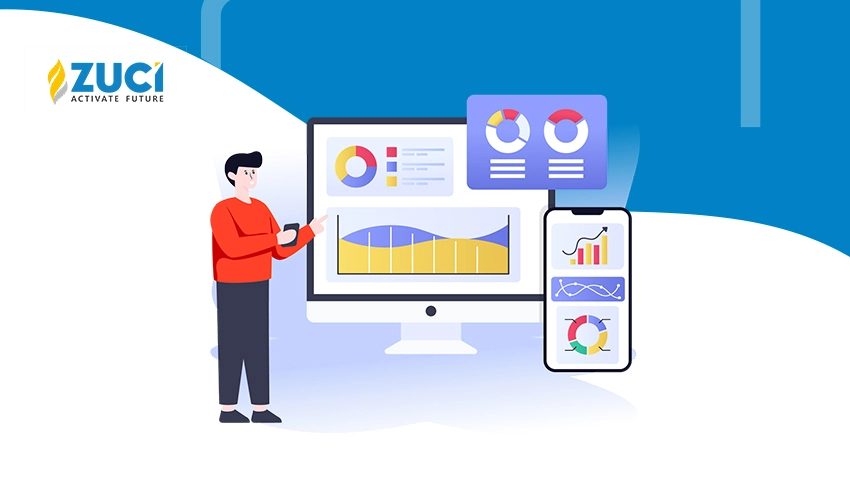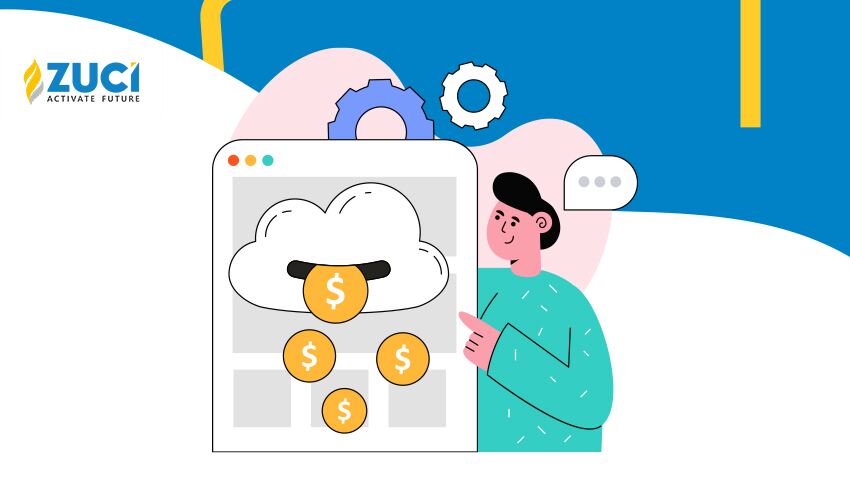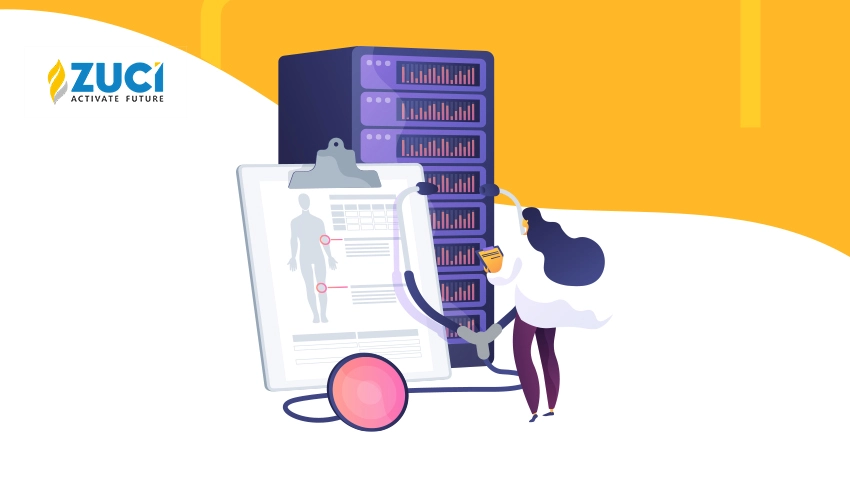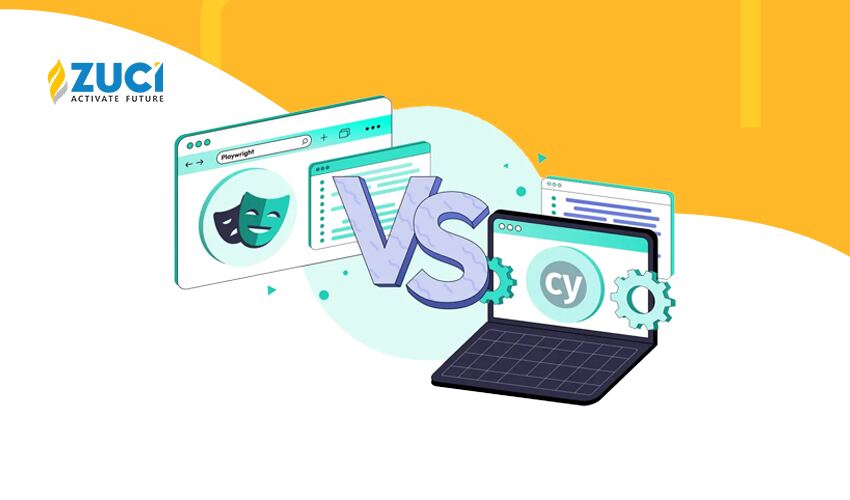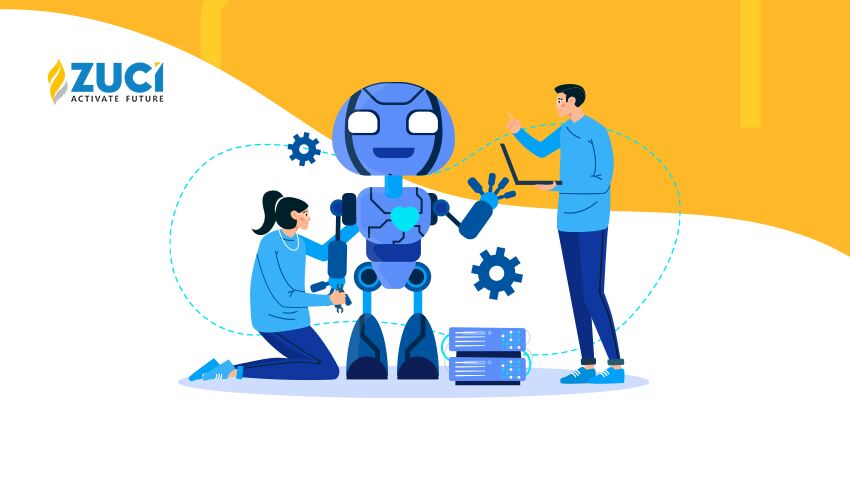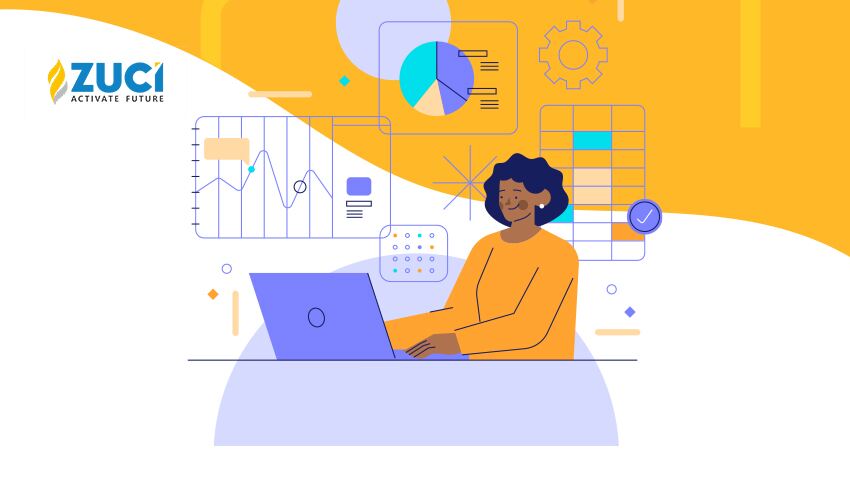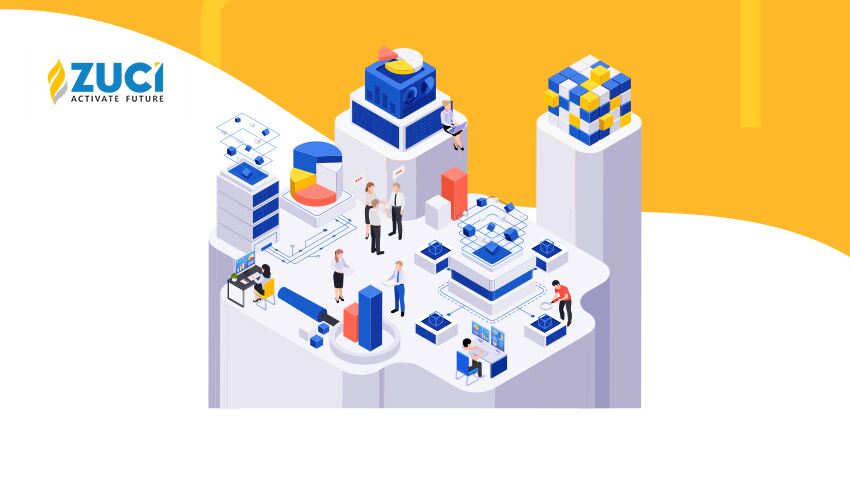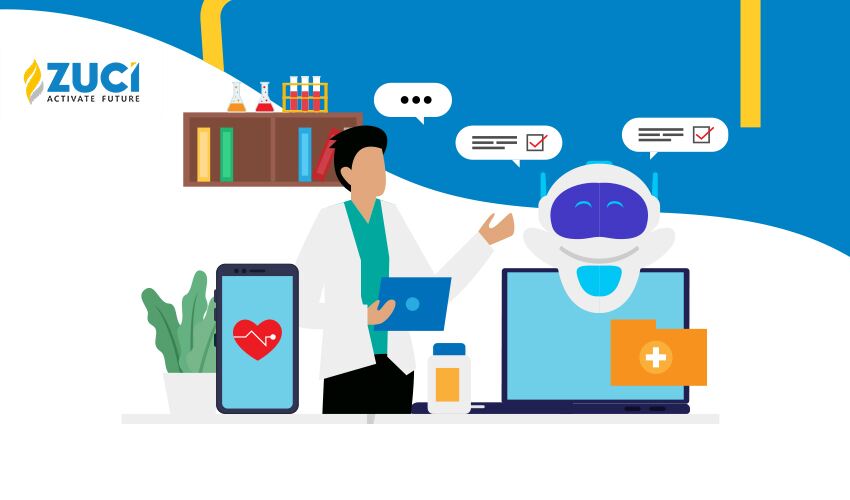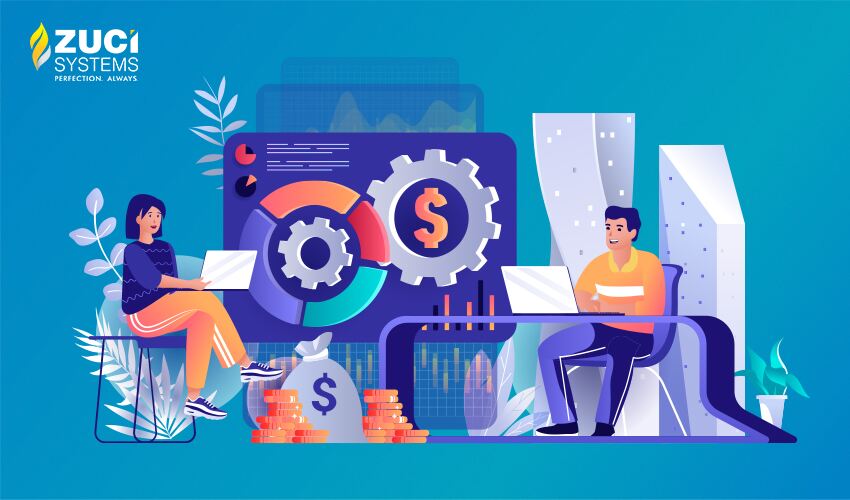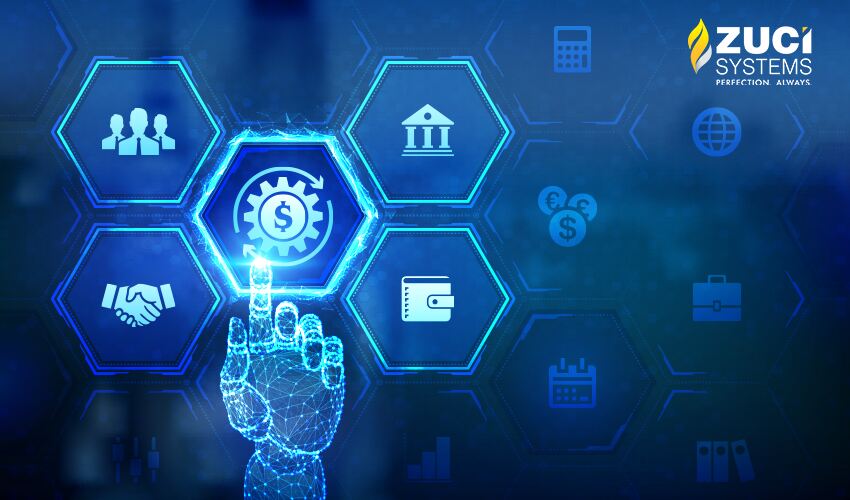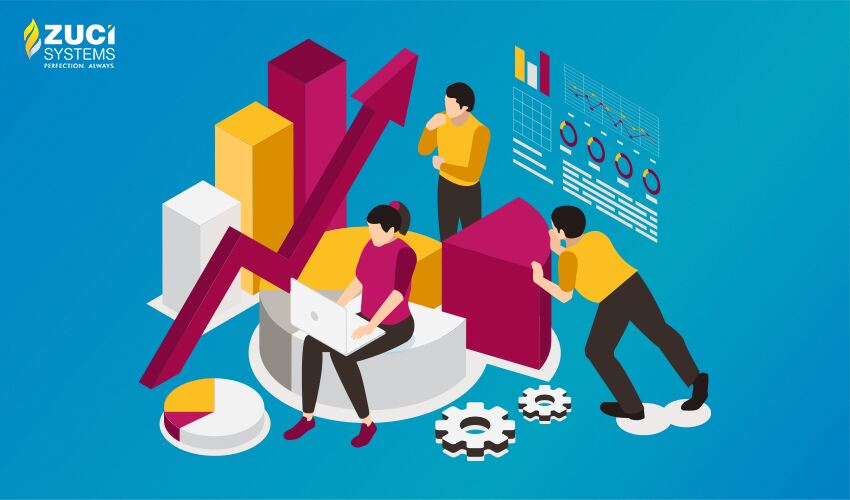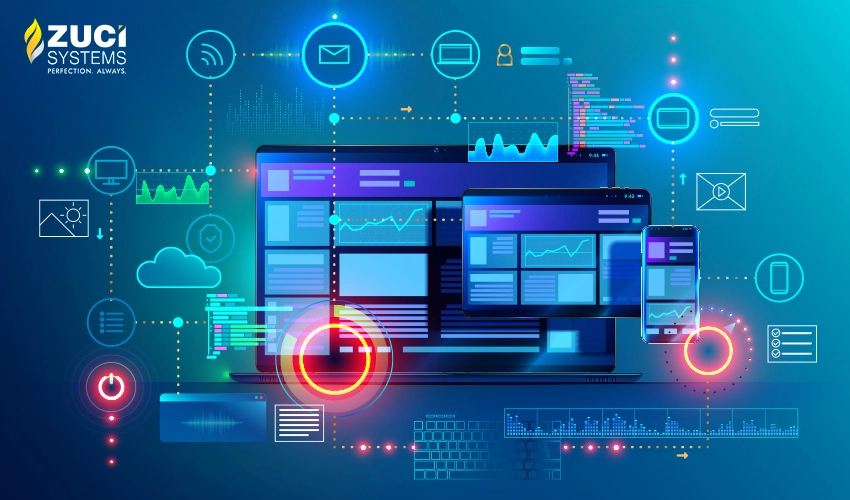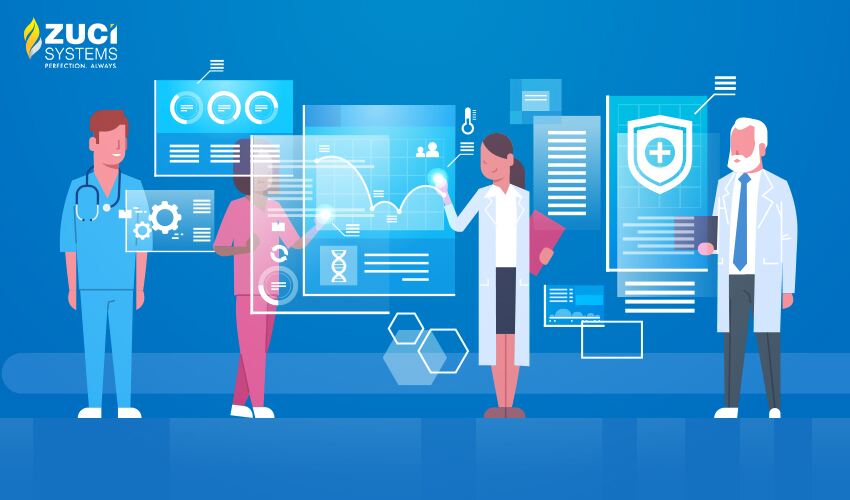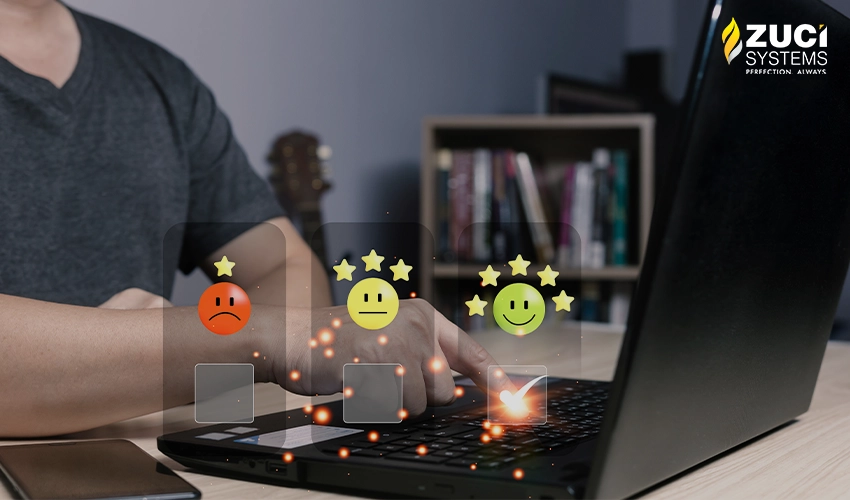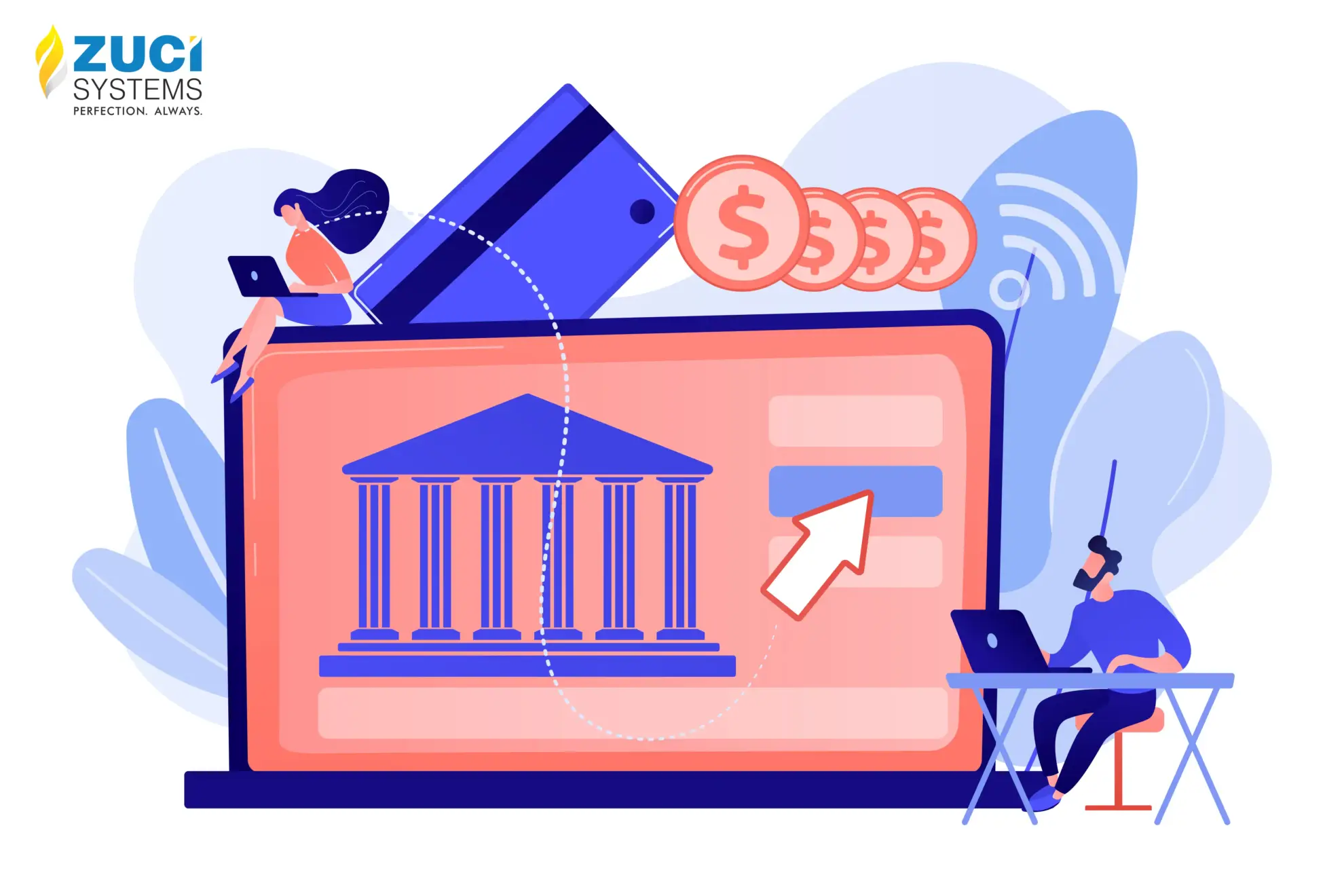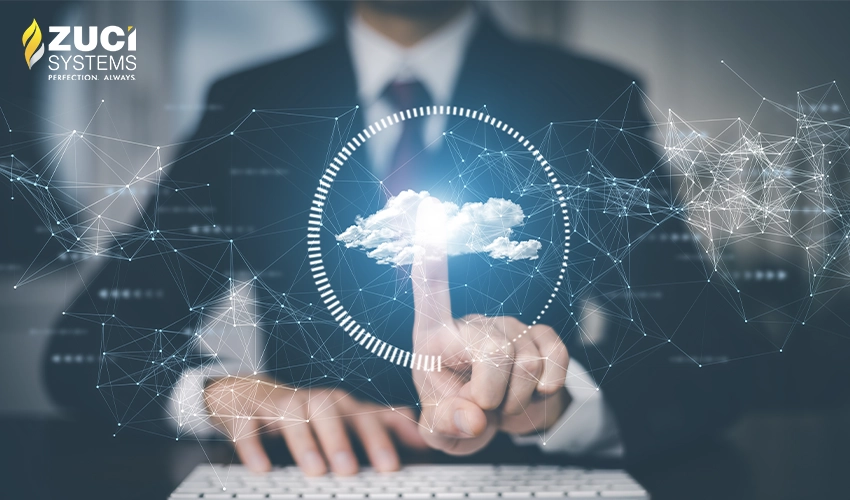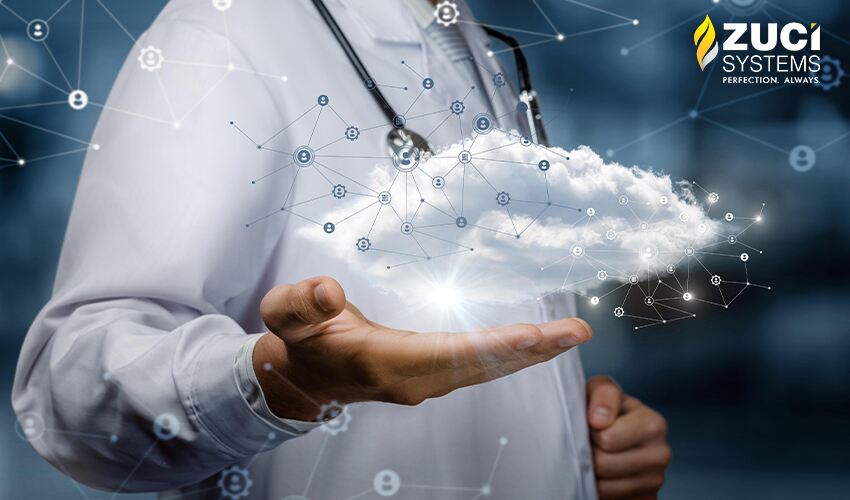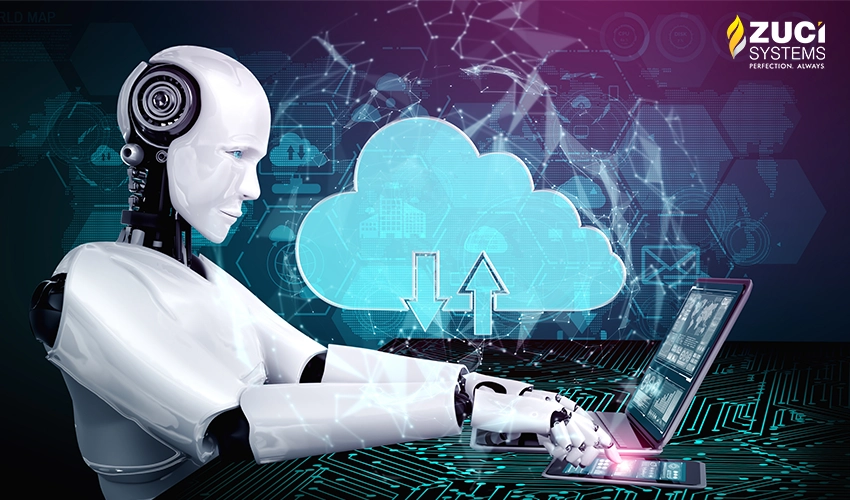Reading Time : 2 Mins
Top 10 Data Science Trends in 2024
I write about fintech, data, and everything around it
A blog about Top 10 Data Science Trends for 2024 with new and exciting developments around the world in Data Science.
Big data is not a new concept for businesses anymore. It has become an integral cog in the business wheel, especially for enterprises as they swear by how these data can be leveraged to gather insights. Data science is where science meets AI. Despite the pandemic, the field has only grown. Guess what? We have also included new trends from 2024 Gartner report focusing on Data Science Trends.
Data Science is one of the fastest-growing areas within the technology industry. It’s also one that is changing the way we approach data and analytics in both the workplace and in our day-to-day lives. Whether you consider yourself an expert or complete novice, these 10 data science trends in 2024 will help grow your business going forward.
Let’s get started.
5 Emerging Trends in Data Science in 2024
- Auto-ML– Automated machine learning (Auto-ML) platforms are gaining popularity and taking over various aspects of the data science lifecycle. These platforms automate tasks such as data sourcing, feature engineering, conducting machine learning experiments, evaluating and choosing the most effective models, and deploying them into production environments.
- Generative AI– With the continuous progress of generative AI systems, the significance of “prompt engineering” is on the rise. This practice involves leveraging natural language prompts to produce desired outputs from AI/ML models. OpenAI’s recent introduction of models like ChatGPT and DALLE-2 highlights the crucial role that well-crafted prompts play in optimizing the performance of these AI systems.
- MLops- MLOps, short for machine learning operations, encompasses a range of practices and tools employed to handle the operational aspects of machine learning model lifecycles. These include tasks such as auto-retraining, dynamic learning, packaging and containerization, and deploying models into production environments. As MLOps practices continue to improve in efficiency and effectiveness, they will alleviate data scientists from mundane deployment activities, enabling them to focus more on tasks such as model retraining and calibration.
- LLMs- Base layers like BERT and GPT-3, which are powerful language models, are anticipated to gain broader adoption in various machine learning models. This enables data scientists to leverage transfer learning, fine-tuning these models to address their specific problem, rather than undertaking the arduous task of constructing and training such models from scratch.
- Cloud- The utilization of cloud computing is poised to expand further in the data science domain due to its advantages of virtually unlimited computing power, accessibility, and cost-effectiveness. Cloud solutions are becoming increasingly accessible, eliminating the need for extensive infrastructure engineering teams or dedicated infrastructure maintenance. Data scientists can now set up their environment with ease, requiring only a few clicks, and enjoy the flexibility to scale their resources up or down as desired.
Top 10 Data Science Trends in 2024:
At Zuci Systems, we constantly research and analyze the latest developments and innovations in this area. We strongly believe that data feed data science and good analytics need good data. Check out the top 10 data science trends in 2024.
1. Boom in cloud migration
68% of the CIOsranked “migrating to the public cloud/ expanding private cloud” as the top IT spending driver in 2020. Enterprises will soon start preparing for application migration by containerizing their on-premise applications. This will be as a result of cost considerations, chip shortages, and the need for scalability. Companies will migrate their online transaction processing systems, data warehouses, web applications, analytics, and ETL to the cloud.
Businesses which already have hybrid or multi cloud deployments will concentrate on porting their data processing and analytics. By doing so, they will be able to move from one cloud service provider to another without worrying about lock-in periods or having to leverage specific point solutions.
2. Growth of predictive analytics
By analyzing data of more than 100 million subscribers, Netflix was able to influence more than 80% of content watched by its users, thanks to accurate data insights.
Predictive analytics is all about predicting future trends and forecasts with the help of statistical tools and techniques leveraging past and existing data. With predictive analytics, organizations can make insightful business decisions that will help them grow. They can think of the way they want to strategize and revise their goals, thanks to data-driven insights that are generated with the help of predictive analytics.
The global predictive analytics market is expected to become 21.5 billion USD by 2025, growing at a CAGR of 24.5%. The incredible growth that is predicted here is because of adoption of digital transformation across a number of organizations. In fact, Satya Nadella, Microsoft CEO, is quoted saying- ”We’ve seen two years of digital transformation in two months.”
Check out our case study on how we implemented Predictive analytics to optimize acquisition cost for Singapore enterprise.
3. AutoML
Automated Machine Learning, or AutoML, is one of the latest trends that is driving the democratization of data science. A huge part of a data scientist’s job is spent on data cleansing and preparation, and each of these tasks are repetitive and time-consuming. AutoML ensures that these tasks are automated, and it involves building models, creating algorithms and neural networks.
AutoML is essentially the process of applying ML models to real-world issues by leveraging automation. AutoML frameworks help data scientists in data visualization, model intelligibility and model deployment. The main innovation in it is hyperparameters search, utilized for preprocessing components, model type selection, and for optimizing their hyperparameters.
4. TinyML
TinyML is a type of ML which shrinks deep learning networks so that it can be fit on any hardware. Its versatility, tiny-form factor, and cost-effectiveness make it one of the most exciting trends in the field of data science, with which a number of applications can be built. It embeds AI on small pieces of hardware, and solves the problem that comes with embedded AI, which is power and space.
On-device machine learning has seen use cases in a variety of places. From building automation to drug development and testing, it allows for fast iteration cycles, increased feedback and offers you the opportunity to experiment further. Pattern recognition, audio analytics, and voice human machine interfaces are the areas where TinyML is extensively applied.
Audio analytics help in child and elderly care, equipment monitoring and safety. Apart from audio, TinyML can also be used for vision, motion and gesture recognition. As of now, there are more than 250 billion embedded devices that are active in the world, according to McKinsey. TinyML can bridge the gap between edge hardware and device intelligence. With newer human machine interfaces emerging, TinyML has in it to embed AI and computing in a cheaper, scalable and more predictable manner. TinyML device shipments are expected to grow to 2.5 billion in 2030, up from as little as 15 million in 2020.
5. Cloud-native solutions will become a must-have
Cloud-native is generally used to describe container-based environments. They are used to develop applications which are built with services packaged in containers. The containers are deployed as microservices and managed on elastic infrastructure via agile DevOps processes and continuous delivery workflows. A cloud-native infrastructure comprises software and hardware which are used to run the apps effectively. The infrastructure would also include operating systems, data centers, deployment pipelines, and a bunch of apps to support them.
Thanks to a wide adoption of digital transformation, most businesses these days are working in a cloud-based environment. Building an on-premise infrastructure will cost a lot, that’s one more reason why cloud-based is the go-to option for enterprises these days. It also involves the adoption of cloud-native analytics solutions which create detailed analysis on the cloud.
6. Augmented Consumer Interfaces
The near future might have an AI-agent in the form of an interface to help you with your shopping. You might be buying your products in VR, getting an idea about the product via audio or through an augmented consumer interface. Augment consumer interfaces can take multiple forms, it could be AR on mobile or a communication interface such as a Brain-Computer Interface (BCI). These technologies have real-world implications in the way we shop. Even your Zoom meetings might be replaced by new augmented consumer interfaces. The metaverse that the likes of Facebook, Microsoft and other companies are creating will be a part of this augmented consumer interface.
The technologies that will give a fillip to augmented consumer interfaces are IoT, VR, AR, BCI, AI speakers, AI agents, and so on. All of these will evolve into a new paradigm where artificial intelligence is going to be the intermediary.
7. Better data regulation
2,000,000,000,000,000,000 bytes of data is generated every single day across all industries, according to G2. That’s 18 zeroes. Does that shift your attention to the importance of data regulation? It seriously should.
Big data optimization cannot be an afterthought. With data governing every aspect of AI, predictive analytics, and so on, organizations need to handle its data with care. Data privacy is not a buzzword anymore. A Cisco Consumer Privacy Survey 2019 report says that 97% of companies realized that they were seeing benefits such as competitive advantage and investor appeal when they invest in data privacy.
With AI moving deep into industries such as healthcare, sensitive EMR and patient data cannot be compromised. Data privacy by design will help create a safer approach towards collecting and handling user data while the machine will learn to do it by itself.
What we do, how we move and build in the cloud should also be under scrutiny from a policy regulation view. The speed at which data science and its technologies are growing is immensely fast. There are hardly any moves to regulate data privacy or ensure the safety and sanctity of the data of customers. AI systems could lead to a huge fall if there is no regulatory body that ensures its maintenance.
8. AI as a Service (AIaaS)
It refers to businesses that offer out-of-the-box AI solutions which allows the clients to implement and scale AI techniques at a low cost. Recently, OpenAI announcedthat it would make GPT-3, its transformer language model, available as an API to the public. AIaaS is one of the latest trends where cutting-edge models are provided as services.
The future of this technology will be characterized by well-defined and self-contained function. For example, a manufacturing business will use one service to build a chatbot for internal conversation and a different service for predicting inventory. Thanks to an increase in the number of domain expert AI models, complex algorithms that provide specific solutions can be created on-demand.
One of the biggest challenges when it comes to AIaaS is meeting compliance requirements. If yours is a business that can meet its compliance and regulatory obligations, then AIaaS is an excellent way to build AI-solutions at speed and scale.
The market for AIaaS is expected to reach $43.298 billion by 2026, growing at an incredible CAGR rate of 48.9% during the period of 2021-2026. AIaaS looks extremely promising for 2024 and beyond, we are likely to see a number of businesses leveraging AI with the help of this technology.
9. Training data complexities
For all the talk about data being the new oil and how important it is for organizations, most of this data collected goes unused. Also called dark data, it is mostly collected, processed and stored just for compliance purposes. On top of this, 80-90% of the data that businesses generate today is unstructured, it becomes all the more difficult to analyze them.
To build credible machine learning models, you need huge amounts of training data. Unfortunately, that is one of the main reasons which acts as the inhibitor for applications of supervised or unsupervised learning. There are certain areas where a large repository of data is not available, and it can seriously hinder data science activities.
Transfer learning, Generative Adversarial Network (GAN), and reinforcement learning solves this issue by reducing the amount of training data required or it generates enough data using which models can be taught.
For a machine to learn what you are trying to teach it, at least hundreds of thousands of examples are required. Transfer learning ensures that it cuts this down to a few hundred. GANs are great for creating data for which reinforcement learners can interact in a highly simulated environment. GAN is the technology behind deep-fake which creates life-like images and videos
10. Human jobs will remain safe
People assumed that AI was going to take over their jobs. Nothing could be farther from the truth, AI has acted as an enabler in assuring that human jobs are much more optimized than ever. While the tools provided by AI do get things done at a faster pace and are less prone to error, your jobs are not going to go off any time soon.
Organizations that leverage artificial intelligence for data analytics stand at a position where they can get a lot of success by taking data-driven business decisions. The best thing about AI is that it goes through huge amounts of data, finds patterns, analyzes them, and converts them into insightful information.
While people will get replaced in a few jobs, it will not result in a scarcity of jobs, and no one has to panic either. The human factor is always going to be significant, and there are no questions about it. Data science has not advanced to that stage where its AI can replace human minds. Data scientists will interpret the data using AI algorithms and help businesses scale their operations at a faster and more efficient rate.
Emerging Data Science Trends – Beyond 2024
1) Big Data on the Cloud
The convergence of Big Data and Cloud technology is a game-changer for data science. Storing and processing vast volumes of data in the cloud offers scalability, flexibility, and cost-effectiveness. Cloud-based solutions empower data scientists to tackle complex analytical tasks without the need for extensive on-premises infrastructure.
2) Use of Augmented Analytics
Enterprises are experiencing a significant reduction in data processing time, leading to more accurate insights and better decision-making. The transformative power of AI, ML, and NLP is evident in streamlining data preparation, processing, analytics, and visualization. These advanced technologies empower experts to delve deeper into data, generating comprehensive reports and precise predictions.
Augmented analytics seamlessly merges data from internal and external sources, facilitating a holistic understanding of information and enhancing the organization’s data-driven capabilities.
3) Focus on Edge Intelligence
Gartner has made significant predictions, foreseeing edge computing as a mainstream process in 2024. Edge computing, also known as edge intelligence, involves conducting data analysis and aggregation in close proximity to the network. Embracing edge computing has become a priority for industries aiming to harness the potential of the Internet of Things (IoT) and data transformation services, seamlessly integrating edge computing into their business systems.
The outcome is remarkable, as it brings forth enhanced flexibility, scalability, and reliability, elevating the overall enterprise performance. Latency is significantly reduced, while processing speed increases, resulting in improved productivity.
4) Automation of Data Cleaning
A growing number of researchers and enterprises are actively seeking solutions to automate data cleaning or scrubbing processes, aiming to expedite data analytics and derive precise insights from vast datasets. The pivotal role in this endeavor will be played by artificial intelligence and machine learning, driving data cleaning automation to new heights.
5) Responsible AI
Responsible AI stands as a critical force, transforming AI from a perceived threat to a positive contributor to society and its own development. It encompasses multiple dimensions, guiding organizations to make ethically sound decisions when embracing AI, including considerations of business and societal value, risk management, trust, transparency, and accountability.
Gartner’s prediction of the concentration of pre-trained AI models among a select 1% of vendors by 2025 underscores the societal importance of responsible AI.
6) Data-centric AI
Data-centric AI signifies a notable shift away from a conventional model and code-centric approach, prioritizing a data-focused strategy to construct more robust AI systems. The rise of data-centric solutions, such as AI-specific data management, synthetic data, and data labeling technologies, addresses numerous data-related challenges, encompassing accessibility, volume, privacy, security, complexity, and scope.
According to Gartner’s projection, by 2024, a significant 60% of data for AI applications will be synthetic, simulating reality, envisioning future scenarios, and mitigating AI-related risks. This substantial growth is a noteworthy progression from the mere 1% of synthetic data used in 2021, further reinforcing the significance of data-centric approaches in the AI landscape.
7) Increase in Use of Natural Language Processing
The rise of natural language processing (NLP) is transforming how humans interact with machines. NLP enables chatbots, voice assistants, and sentiment analysis, opening up new avenues for data-driven insights and customer engagement.
8) Generative AI for Deepfake and Synthetic Data
While Generative AI holds immense potential for creating realistic deepfake content and synthetic data, it also raises concerns about misinformation and data privacy. Striking a balance between innovation and responsible use of Generative AI is paramount in the data science community.
Data Science Trends – Use Cases – Beyond 2024
-
Predicting Customer Behavior in Retail
Advanced analytics and machine learning algorithms enable retailers to process and decipher vast datasets, predicting future customer behavior with astonishing accuracy. By identifying trends and patterns, retailers can segment their customer base, personalize marketing strategies, and offer targeted promotions, significantly enhancing customer engagement and loyalty.
AI-driven recommendation engines anticipate customers’ preferences, suggesting relevant products and services, leading to higher conversion rates and customer satisfaction. Sentiment analysis through natural language processing helps gauge customer feedback and sentiment, enabling retailers to address concerns promptly and improve brand sentiment. Additionally, predictive modeling aids in inventory management, optimizing stock levels and reducing stockouts, ensuring a seamless shopping experience for customers.
-
Fraud Detection in Finance
By applying machine learning algorithms and anomaly detection techniques, these institutions can swiftly identify suspicious patterns and flag potential fraudulent activities. As fraudsters become more sophisticated, so do data science techniques, empowering finance professionals to stay one step ahead in the ongoing battle against fraudulent threats.
With effective analysis of historical data and identifying recurring patterns, predictive models can alert financial institutions to potential threats before they materialize. Moreover, advanced data science trends facilitate the integration of data from multiple sources, such as social media and external databases, providing a comprehensive view of customers’ behavior and enhancing fraud detection capabilities.
-
Predicting Equipment Failures in Manufacturing
By harnessing machine learning algorithms and advanced analytics, manufacturers can analyze real-time sensor data, historical performance records, and environmental factors to predict potential equipment failures with precision. This proactive approach enables manufacturers to schedule maintenance activities strategically, maximizing the lifespan of equipment and minimizing operational disruptions.
By continuously monitoring equipment performance and feeding data into predictive models, manufacturers gain valuable insights into failure patterns and underlying factors. Predictive maintenance not only reduces downtime but also optimizes spare parts inventory and extends equipment longevity, significantly improving the bottom line for manufacturing operations.
-
Predicting Patient Outcomes in Healthcare
Through machine learning algorithms, predictive models are trained to identify patterns and risk factors associated with various patient outcomes, empowering healthcare providers to offer personalized interventions for better health outcomes. By mining vast volumes of patient data and clinical records, data science models can identify hidden correlations and risk factors that influence patient outcomes. From identifying high-risk patients to recommending optimal treatment approaches, predictive analytics empowers healthcare providers to make informed decisions, improve patient safety, and optimize resource allocation.
Conclusion:
Data science includes both practical and theoretical applications of ideas and leverages technologies such as big data, predictive analytics, and artificial intelligence. In this article, we have discussed the top 10 data science trends in 2024 and beyond. The big data and data analytics market is expected to reach more than $421 billion by 2027. The data science field is growing tremendously fast and organizations are embracing them whole-heartedly so that they do not get left behind.
If you are looking for help with big data solutions, connect with us. The team at Zuci will be thrilled to show you how we can convert your data into business intelligence.
Related Posts




